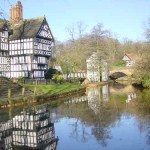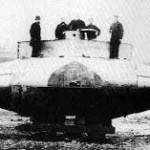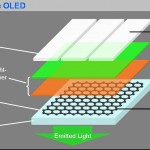Next tour: Thu 9 June 2016 (in association with the Histories Festival).
Meet: Outside the Museum of Science & Industry, Lower Byrom Street, 2pm.
Manchester invented the modern world, for this was the first city of the industrial revolution, and its inhabitants have given the world some of its greatest creations. These are the ones we detail on this most inventive of walks (in chronological order).
1. John Kay’s Fly Shuttle, 1733
Crucial to the development of the cotton industry, in which Manchester led the world from the late 18th century until the Second World War, was this simple machine.
Before John Kay created the Fly Shuttle, workers had “thrown” the shuttle with their hands, and a couple of weavers were needed at the loom, throwing the shuttle, one to the other. Now it could be done by one person. Kay fought for copyright in the courts but wasn’t successful. He died in France ruined.
• Kay and his story is featured in the 10th Mural inside the Town Hall.
 2. Britain’s 1st canal – the Bridgewater, 1761
2. Britain’s 1st canal – the Bridgewater, 1761
Britain’s first man-made waterway with a route independent of rivers was financed by Francis Egerton, 3rd Duke of Bridgewater, who needed to find a way of reducing flooding in his Worsley mine. His engineer, James Brindley, and land agent, John Gilbert, proposed letting the water be channeled and the coal taken out along it. The Duke soon realised he had enough coal to supply the needs of local towns, and the most important was Manchester. So he decided to build a canal across the land so that his supply could reach those towns.
3. Atomic Theory, 1803
John Dalton presented a paper to the Manchester Literary & Philosophical Society on 21 October 1803 which proposed that all matter is composed of atoms, chemical reactions occur when atoms are rearranged and that compounds are formed from atoms of the constituent elements. It changed the face of science and ranks as the first instance of a Manchester event having worldwide conclusions.
4. Vegetarianism, 1809
William Cowherd, a curate at St John’s Church off Deansgate in the 1790s left to set up a church in Salford asserting that people should “eat no more meat till the world endeth” and citing Genesis 9:3 as proof that God wanted man to refrain from eating meat.
5. First Passenger Railway, 1830
The Manchester-Liverpool Railway was the first passenger line in the world and the first line with two tracks, timetables and stations. Liverpool Road, the Manchester terminus, survives as part of the Museum of Science & Industry.
 6. The First Submarine, 1878
6. The First Submarine, 1878
The Rev George Garrett, a Moss Side vicar, founded the Submarine Navigation and Pneumataphore company at 56 Deansgate in 1878. Resurgam, the first ever military submarine, was devised in his office in 1878. Not being too near the sea, Garrett’s team went to the Wirral to test his invention. Resurgam I was a 14ft, one-man vessel nicknamed “the curate’s egg”. Resurgam II, built in Birkenhead in 1879 sunk near Rhyl. The wreck was discovered in 1995.
7. Competitive Football, 1888
William McGregor, a Scottish draper, devised an ingenious new means of testing the best football teams in which each club would play each other twice, home and away, during one year. The main early meeting of what became the Football League took place at the Royal Hotel, Manchester, on 17 April 1888.
8. Rolls Royce, 1904
Frederick Henry Royce, a local engineer, met Charles Stewart Rolls, a wealthy London playboy at the Midland Hotel and soon formed Rolls-Royce, making cars in Hulme, two miles away. Rolls had broken the world speed record in 1903, going an astonishing 93 mph only a few years after the police had warned him not to drive at more than 4mph!
9. The 1st Programmable Computer, 1948
Tom Kilburn and Fred Williams built a machine out of war surplus materials in 1946 that could perform calculations from a stored program – what is now recognised as the first computer, “Baby”. They first used it on 21 June 1948, running a program written by Tom Kilburn, the world’s first and the only one he ever wrote.
 10. Graphene, 2004
10. Graphene, 2004
The world’s thinnest material, one atom thick, soon to revolutionise computer screens and similar technology, was created by two Manchester University scientists, Konstantin Novoselov and Andre Geim, in 2004.
Just the latest of a series of Manchester inventions that shook the world!